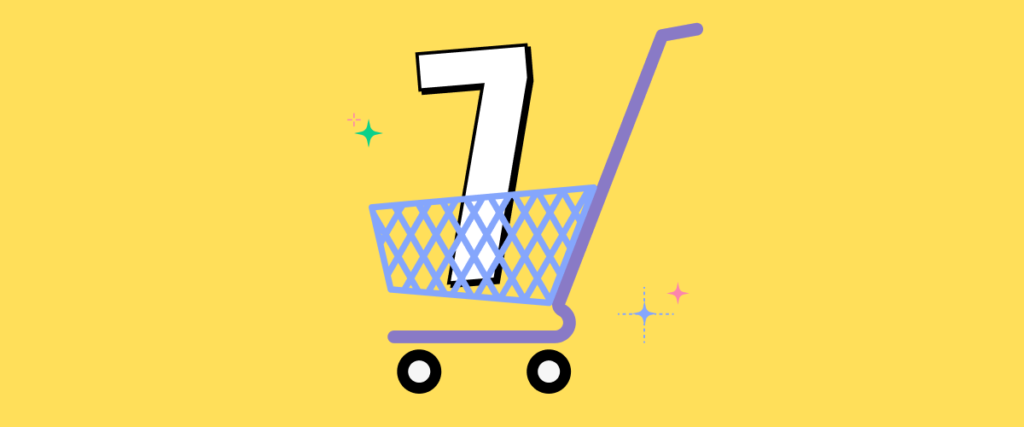Bonus material: Shopping Cart Abandonment Industry Benchmark Report
Every year, eCommerce stores lose out on $18 billion in revenue due to shopping cart abandonment[*].
There is good news, however. Tools like retargeting, dynamic ads and email automation allow brands to recover lost purchases and increase sales.
Below, we’ll cover seven strategies you can use to bring customers back to complete their purchases after abandoning their cart. If you’ve already tried a few techniques, feel free to jump ahead to one of the other strategies.
The first step to recovering abandoned carts is figuring out why your customers are abandoning their carts to begin with.
Why Are Your Customers Abandoning Their Carts?
To choose the right abandoned cart strategy, you need to understand why customers are leaving in the first place. Unfortunately, there are a multitude of reasons.
For example, customers might plan to buy later and forget, get pulled away by a competitor’s ad, or they might be scared off by high shipping rates.
Read More: 17 Reasons Online Shoppers Abandon Their Carts in 2021
Once you understand why they leave, you’ll want to develop a strategy to bring those customers back to finish their transactions. There are two approaches you can take:
- Reduce shopping cart abandonment rates by preventing customers from abandoning their carts—for example, being more transparent about shipping costs and adding social proof to establish trust.
- Recover abandoned carts by attracting customers who started the checkout process back—for example, sending an email reminder or using push notifications.
To be effective, it’s best to take a two-pronged approach by preventing customers from leaving and drawing customers back.
The specific strategies your team implements should be customized based on the types of customers you attract, your buyer personas, and your website.
7 Abandoned Cart Recovery Strategies That Work in 2021
Not every abandoned cart can be recovered.
Some users are window shoppers or comparison shoppers. Some are browsing with informational intent, rather than transactional.
But many of the cart abandoning customers can be enticed back to complete their order. They just need a little push.
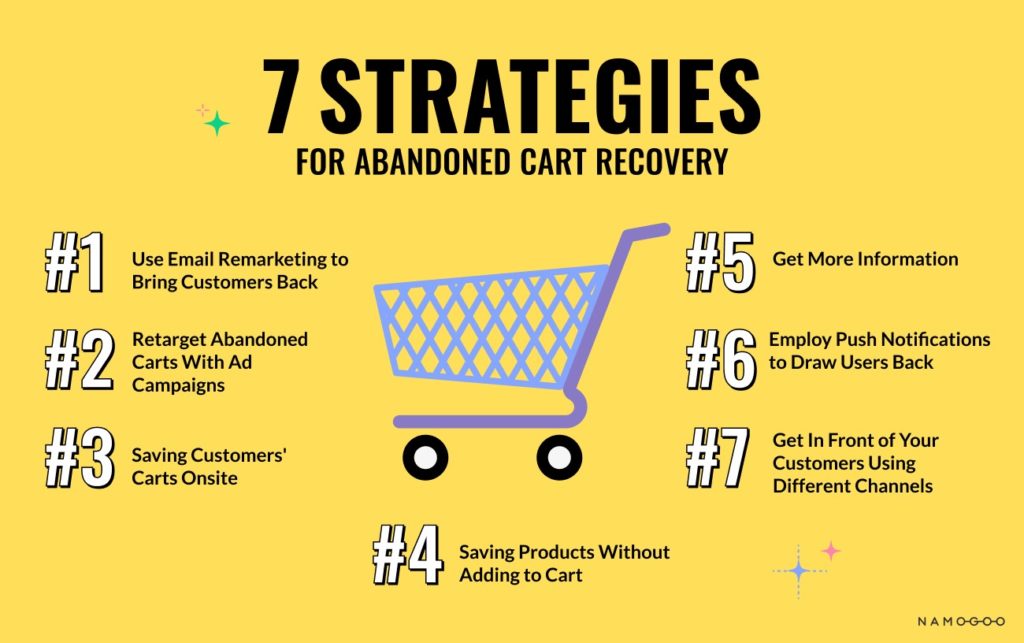
Here are seven abandoned cart recovery strategies to bring customers back to your store and checkout.
#1. Use Email Remarketing to Bring Customers Back
Abandoned cart emails are by far the most popular cart recovery strategy, which makes sense. They work.
The average abandoned cart email sees over a 40% open rate, 9.5% clickthrough rate and see an average recovery rate of around 3%[*].
Email remarketing uses the information you’ve already gathered about shoppers to send them personalized email messages encouraging them to complete their purchase.
Since these emails are automated, sent out via your eCommerce platform or email service provider, you can create the drip campaign once and reap the rewards indefinitely.
Ask visitors for their email address as part of the checkout process or by asking them to sign in to their account. Be sure to offer quick login via social (Facebook, Google) to eliminate friction.
Then, if they abandon their cart, you can send them an abandoned cart email reminder.
For example, Everlane sends customers an email reminding them to complete their purchase.
It’s dynamically updated with the items the customer left in their cart and includes the value propositions of the product.
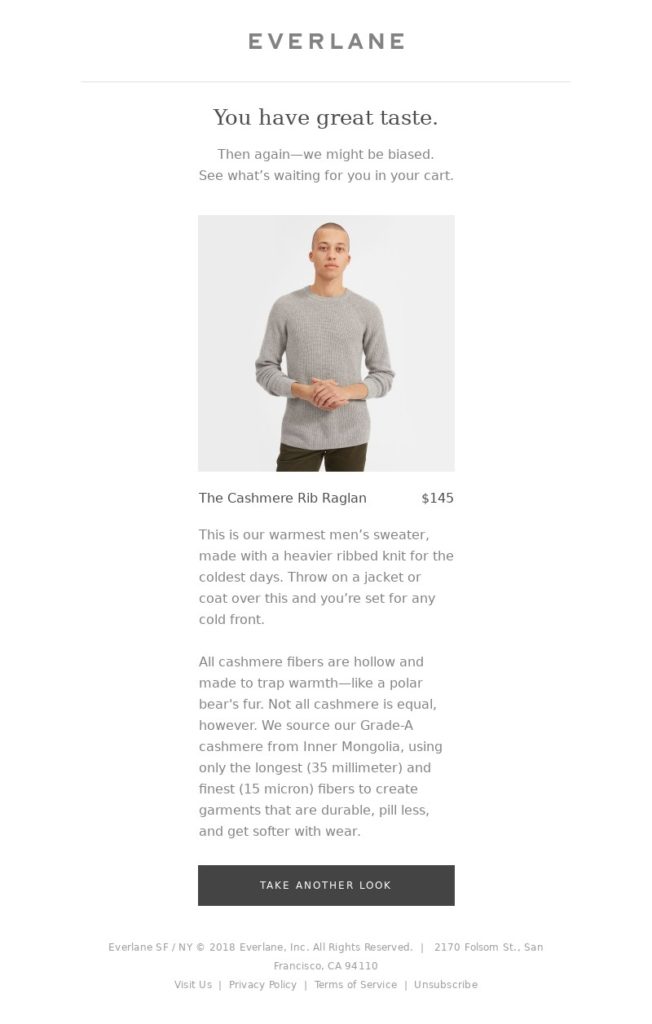
Email retargeting also allows you to:
- Provide custom offers to previous shoppers.
- Send targeted upsells to people interested in specific products.
- Offer discounts to encourage people to complete their purchases.
Consider offering a small discount or recommend bundles that make the purchase more appealing than the items they looked at previously.
Other abandoned cart emails to consider are time-sensitive deals or low stock alerts that create a sense of urgency.
Read More: The Psychology of Discounts: 8 Research-Backed Strategies to Use in 2021
Use A/B tests to see when to send cart abandonment emails. Some data suggest that the best time to send an abandoned cart reminder is one hour after abandonment[*], but this can vary based on industry.

For example, shoppers in the car industry may convert months later, while smaller impulse purchases may respond to a reminder just an hour later.
#2. Retarget Abandoned Carts Through Ad Campaigns
Sometimes a customer doesn’t provide their email address, or your cart recovery emails don’t work. Or maybe the customer abandoned their cart before the checkout phase, where they would have entered in their contact information.
In those cases, a cart retargeting ad can bring eCommerce customers back to complete their purchases.
Retargeting ads use cookies to track the exact item a user adds to their cart and then delivers an ad featuring the item on sites like Facebook, Instagram, Google, or other sites customers browse every day.
Because cart retargeting ads are dynamic (and use the exact item a visitor added to their cart), they can be highly effective at pushing customers to convert.
In fact, product-specific ads earn four to six percent higher click-through rates than static ads and can increase eCommerce profits by as much as 10%[*]. Facebook reported brands using dynamic ads increase ad performance by 25% and save 70% on ad spend[*].
To create effective cart retargeting ads, employ behavioral segmentation to build audiences based on:
- Product Type: Deliver dynamic ads that include the item they abandoned and related items in a carousel ad. This can encourage users to consider similar products.
- Where They Exited: Customers that exit on the shipping page may respond to a free shipping offer, while those exiting on a category page may respond to related items.
- Cart Value: Adjust ad spend, messaging, and ad frequency based on cart value. For example, a customer that abandons a $500 cart of fashion items might be swayed by a personalized consultation and may be worth retargeting for a longer period.
- Demographics: Customer demographics can help you decide where to retarget specific customers. A younger demographic might respond better to retargeting on Instagram or TikTok, while an older audience might respond to ads on their favorite news sites.
Regardless of how you segment ads, be sure to experiment with messaging, ad frequency, and creative to find the most effective retargeting ads.
#3. Give Customers the Capability of Saving Their Carts Onsite
Onsite cart saves allow customers to save items they intend to purchase later. This can be an effective way to remind busy customers to come back to complete their purchases.
It can also save shoppers who:
- Close a tab while price comparing.
- Switch from a mobile device to their desktop or tablet device.
- Thought they completed their purchase but missed a step.
For example, someone shopping for computer accessories might have every intention of completing their purchase but need to check their model number when they get home. Or, someone doing Christmas shopping may need to verify sizes before purchasing clothing.
Unlike browsers, who may or may not actually complete their purchase, these shoppers have every intention of checking out and can often be easy to recover. Online cart saves allow them to return and finish their purchase with ease.
There are two ways to offer onsite cart saves:
- Offer Account Sign In: Customers sign in with their email address, which allows you to save their cart for later. This also enables you to send email reminders. Just remember to offer a guest option for shoppers who don’t want to create an account, as requiring visitors to sign in can drive people away.
- Persistent Carts: Many eCommerce platforms offer persistent carts, which use cookies to save cart additions. This allows customers to return to their cart as long as they are on the same device.
Saving carts is not just a great way to recover abandoned carts; it also shows customers you care by providing a more convenient shopping experience.
#4. Allow Customers to Save Products Without Adding to Cart
Another way to make abandoned cart recovery easy is to allow customers to save items they like, even if they aren’t sure they’ll purchase them.
This reduces cart abandonment by giving customers an option other than adding to their cart and can increase cart recovery by reminding customers of items they were browsing.
For example, you can offer:
- A Wishlist: This allows customers to save items they love for later or even send their wishlist to friends and family.
Save for Later: Amazon offers this feature, which stores items without placing them in the cart.

- Heart Button: The heart button works similar to a “like” button on social media. It allows users to keep a running list of items they love and might consider purchasing later.
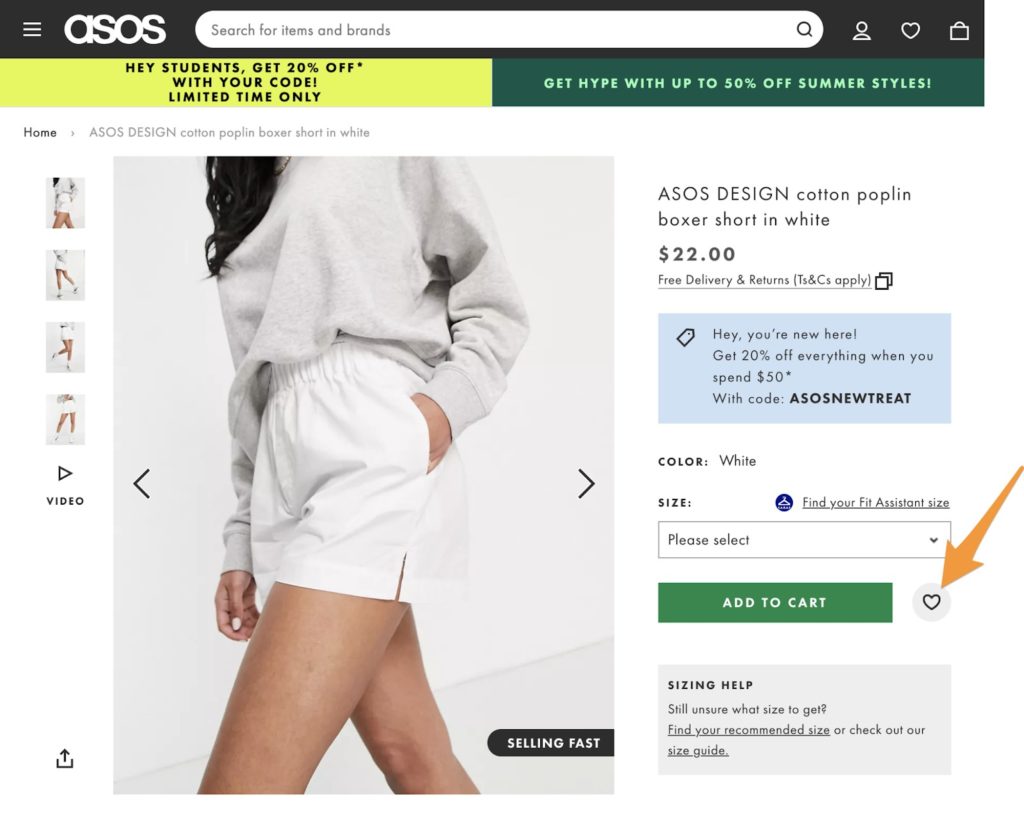
In addition to lowering cart abandonment rates, offering wishlists and the save for later option can also improve inventory accuracy by preventing items from languishing in carts.
These items can be used for dynamic retargeting and remarketing to act as a reminder to check out.
#5. Get Around Cookie Limitations by Gathering More Information
It used to be that ad platforms like Google and Facebook Ads could effectively identify the vast majority of users who landed on your site through their pixel and cookies.
But Apple’s iOS14 update has limited the amount of information platforms can gather from users who opt-out of tracking, and iOS14 is only the tip of the iceberg. Many platforms are beginning to follow Apple’s lead, and brands need to begin to prepare for a cookieless world in 2022 and beyond.
That means that it’s important for brands to gather more information from customers to make these strategies effective.
After all, you can only recover abandoned carts if you know who actually abandoned their carts. So you need to get around the limitations that have been introduced, and the way to do that is to gather more information. Here are a few ways to do this:
- Gate the Shopping Experience with an Email Address. This is a bold move and not for every company, but gating the shopping experience with an email address can give you insurance against ineffective retargeting and remarketing due to the inability to identify and communicate with lost browsers. Check out how Zulily gates their shopping experience with an email address:
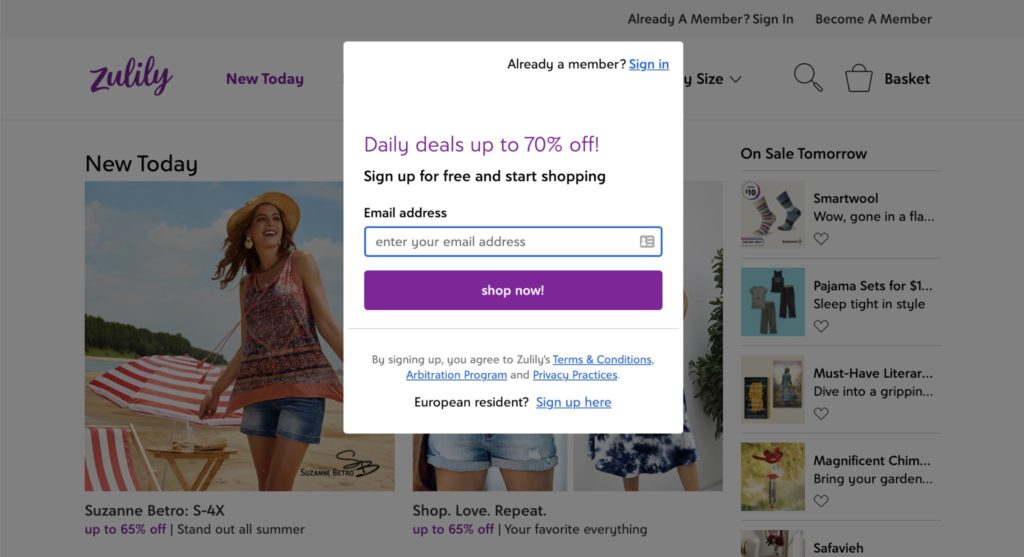
- This helps them to recover abandoned carts because they have their customer’s contact information. If your team decides to explore this, it’s crucial that you explain why this is a requirement, like Zulily does, to avoid eroding the trust of the customer. Not every shopper will stop to read the details behind why you gated the entire shopping experience, but for the more private types of customers, providing context is important. This can also be a risky move as it injects friction into the user experience, so A/B test before implementing this strategy.
- Offer a Small Discount in Exchange for an Email Address: A small 10 or 15 percent discount may encourage new shoppers to hand over their contact information, which increases your ability to retarget them later.
- Ask Customers About Your Checkout Process: A short, multiple-choice survey on the checkout page can shed light on UX issues. Is the check-out process too complex, are shipping costs too high? Rather than guessing, asking outright can provide the data you need to improve the checkout process.
Be sure to balance your desire for information with the user experience. Asking too many questions could scare some customers off.
#6. Employ Push Notifications to Draw Users Back
A push notification is a small popup message that appears on a mobile or desktop browser. You’ve likely seen them when you go to close a browser — a small message asks “Are you sure you want to leave? Here’s another resource you might like!”
Those exit-intent popups help keep customers on-page, but the same strategy can be used to send users messages long after they’ve left your website. Tools like Pushwoosh and Amazon SNS can easily add this capability to your eCommerce site.
However, push notifications can annoy some users, so use these with caution. Ask customers for permission first, then use push notifications to remind customers to complete their purchase.
For example, you can use push notifications to:
- Ask if they want to save their cart before leaving.
- Send a checkout reminder 30 minutes after they leave your site.
- Notify a price-drop notification for items in their cart.
- Send low inventory reminders.
- Offer a coupon code after two or three days.
Push notifications are effective because they are both personalized and timely, allowing you to reach customers at just the right moment with just the right offer.
#7. Remind Customers What They’re Missing Out On Through Different Channels
While sending abandoned cart emails is the most popular form of remarketing, it has its drawbacks.
Between inbox clutter, deliverability issues, and the dreaded “promotions” folder, most of your customers won’t open your emails, let alone click through.
So getting in front of your customers to remind them of what they’re missing out on through a different communication channel can be a powerful lever.
Using SMS or a direct messaging app like Whatsapp or Facebook Messenger can help you rise above the constant noise of the email inbox and provide more direct lines of communication with your customers.
Bring Customers Back to Your eCommerce Site With a Data-Backed Cart Recovery Strategy
Before developing a cart recovery strategy, take the time to figure out why your customers are leaving by tracking exit pages, leveraging customer surveys, and A/B testing new features, such as social proof and free shipping offers.
Building abandoned cart recovery into your remarketing strategy is crucial, as you’ll always have some customers who abandon their carts.
But even the best-in-class recovery strategies will pale in comparison to reducing cart abandonment rate strategies to begin with because the majority of interrupted customer journeys will never get back on track.
Your best line of defense against cart abandonment is to apply strategies to reduce it from the start. Reduce friction in the checkout flow, improve shopping cart UX, and offering personalized promotions based on real-time intent, like with Intent-Based Promotions.

Sarah Peterson is a marketing executive with a track record of driving growth & omni-channel digital marketing strategy for top eCommerce & DTC companies. Now she's here to share advanced eCommerce growth strategies with Namogoo's audience.



